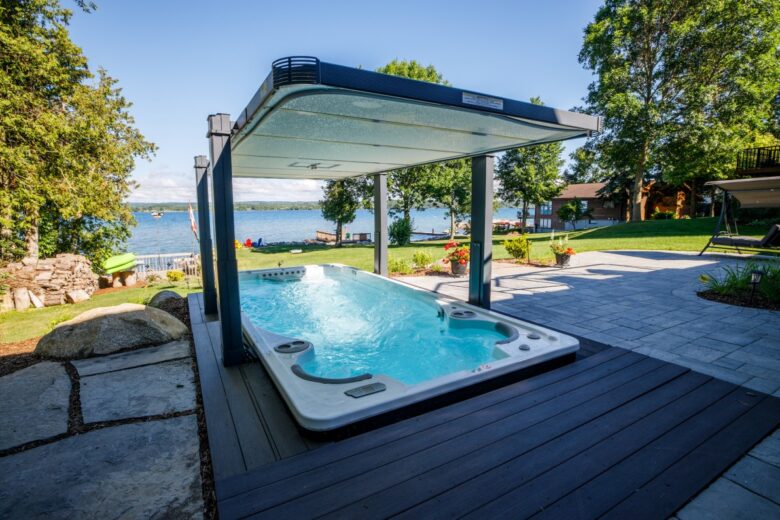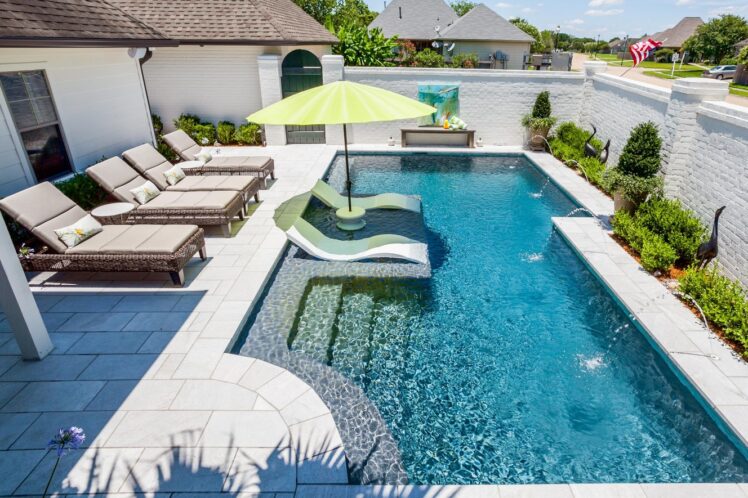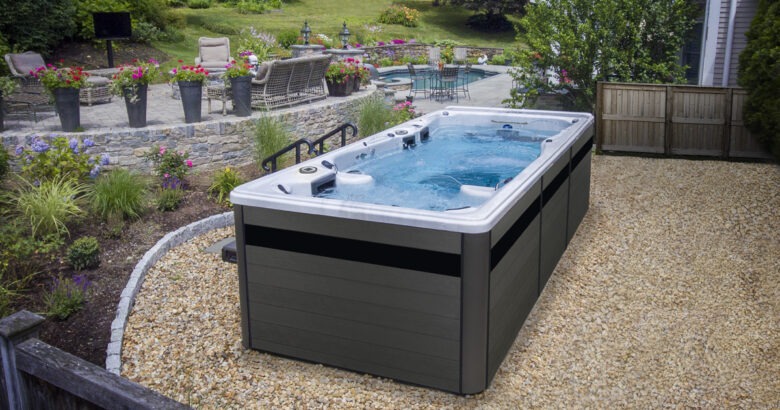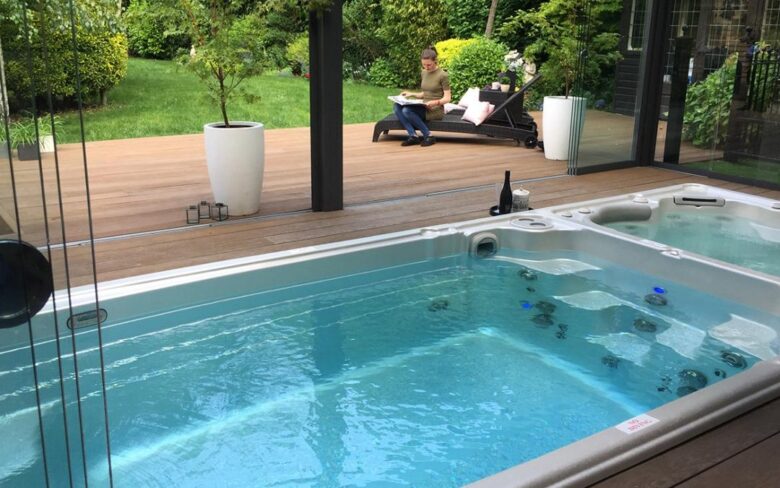The allure of a swim spa is undeniable. Offering the benefits of both a swimming pool and a hot tub, it represents a luxurious addition to one’s home. As wellness and home improvement become increasingly intertwined, the question arises: Is it worth getting a swim spa? This article delves into the multifaceted aspects of swim spas, exploring alternatives and comparing options to provide a comprehensive understanding.
Contents
Understanding Swim Spas
A swim spa combines the exercise capabilities of a full-sized swimming pool with the therapeutic benefits of a hot tub. It is equipped with powerful jets that create a constant current, allowing for stationary swimming or aquatic exercise. This innovative concept has gained popularity for its versatility, compact size, and year-round usability. It seems that there is no alternative to a swim spa, that are offering similar benefits in a different format.

Source: hutten.ca
The Appeal of Swim Spas
The primary allure of swim spas lies in their dual functionality. They cater to fitness enthusiasts seeking a convenient and effective way to swim laps without the need for a large pool. Simultaneously, they offer a relaxing retreat for those looking to unwind in the comfort of warm, jetted water.
Additionally, swim spas are celebrated for their space-saving design. They are particularly suitable for smaller yards where a traditional pool is not feasible. Their portability and above-ground installation options further enhance their appeal, providing flexibility in placement and potentially avoiding the need for extensive landscaping or construction work.
Evaluating the Investment
The decision to invest in a swim spa is significant and warrants a thorough evaluation of costs and benefits. The initial investment can be substantial, with prices varying widely based on size, features, and quality. However, it is essential to consider the long-term value, including the potential for increased property value, savings on gym memberships or public pool fees, and the immeasurable benefits of enhanced well-being and convenience.
Operating costs are another crucial factor. Energy efficiency, maintenance requirements, and the cost of chemicals or saltwater systems can impact the overall affordability of owning a swim spa. Prospective buyers should research and compare different models to find one that balances upfront costs with long-term expenses.
Alternatives to Consider
For those weighing the worth of a swim spa, exploring alternatives is a prudent step. Traditional swimming pools, hot tubs, and public aquatic facilities each offer distinct advantages and limitations.

Source: pinterest.com
Traditional Swimming Pools:
Larger in size, traditional pools allow for more extensive swimming and recreational activities. They can add aesthetic value to a property and are a popular choice for families. However, they require significant space, have higher installation costs, and are often limited by seasonal use.
Hot Tubs:
If relaxation and hydrotherapy are the main goals, a hot tub may suffice. Hot tubs are smaller, less expensive, and easier to install than swim spas. They lack the exercise capabilities of a swim spa but excel in providing a tranquil space for relaxation and socialization.
Public Aquatic Facilities:
Public pools and gyms offer swimming and aquatic exercise opportunities without the need for a personal investment in home equipment. This option can be cost-effective and offers the added benefit of social interaction. However, it lacks the convenience, privacy, and accessibility of a home-based solution.

Source: michaelphelpsswimspa.com
Comparing Swim Spa Options
When considering a swim spa, it’s essential to compare different models and brands to find the best fit for your needs. Key factors to consider include:
Size and Design: Swim spas come in various sizes and layouts. Consider the available space in your yard and your specific usage needs when selecting a size.
Jet Technology: The quality and design of the swim jets significantly impact the swimming experience. Look for systems that provide a strong, steady current and adjustable settings to cater to different fitness levels.
Energy Efficiency: Investigate the insulation, heating systems, and covers used by different models to determine their energy efficiency. A more efficient swim spa may have higher upfront costs but can lead to savings in the long run.
Maintenance Features: Ease of maintenance is a crucial consideration. Some swim spas come with advanced filtration systems, automatic sanitizers, and other features that reduce the time and effort required for upkeep.
Warranty and Support: A robust warranty and responsive customer support are indicators of a manufacturer’s confidence in their product and commitment to customer satisfaction.
Making an Informed Decision
Deciding whether a swim spa is worth the investment requires careful consideration of personal needs, lifestyle, and budget. It’s essential to weigh the immediate allure against practical aspects such as maintenance, operating costs, and how often the swim spa will be used.
Prospective buyers should conduct thorough research, including reading reviews, consulting with professionals, and, if possible, testing different models. Understanding the nuances of ownership, from installation requirements to daily operation, can help in making an informed decision.

Source: freepik.com
The Wellness Perspective
Beyond the physical attributes and financial considerations, it’s important to acknowledge the wellness benefits of a swim spa. The convenience of having a personal space for exercise and relaxation can significantly contribute to a healthy lifestyle. The therapeutic effects of hydrotherapy, combined with the cardiovascular benefits of swimming, offer a holistic approach to well-being.
Long-Term Benefits and Considerations
When contemplating the addition of a swim spa to your home, it’s crucial to think beyond the immediate impact. The long-term benefits and considerations play a significant role in determining the true value of this investment. Over time, a swim spa can become an integral part of a family’s lifestyle, offering a convenient and private space for exercise, relaxation, and entertainment. The health benefits, including improved fitness, stress reduction, and potential relief from muscle and joint pain, can contribute to a higher quality of life over the years.
Moreover, the impact on property value should not be overlooked. A well-maintained swim spa can enhance the appeal of your home, making it more attractive to potential buyers should you decide to sell. This aspect, combined with the cumulative savings on gym memberships and public pool fees, can offset the initial investment and operational costs, making the swim spa a financially viable option in the long run.

Source: medium.com
Conclusion
The question of whether getting a swim spa is worth it hinges on a multitude of factors, from personal wellness goals to financial considerations. By exploring alternatives, comparing options, and thoroughly understanding the implications of ownership, individuals can make an informed decision that aligns with their lifestyle and aspirations. Ultimately, a swim spa represents not just a financial investment but an investment in one’s health, well-being, and quality of life.
